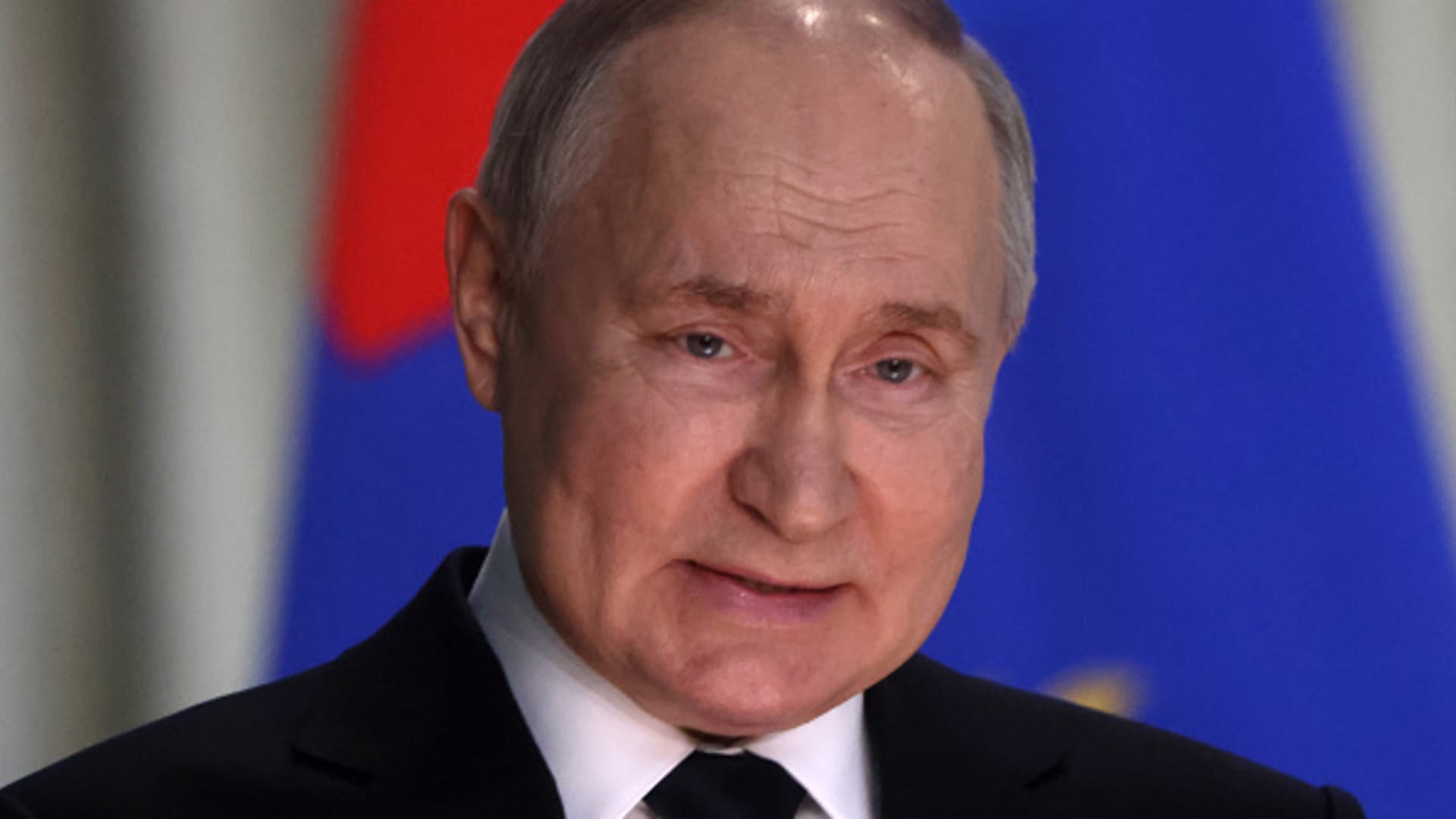ARTICLE AD BOX
Laborers work at a coastal road project construction site in Mumbai on January 12, 2022.
Punit Paranjpe | Afp | Getty Images
India can achieve sustainable economic growth of up to 8% over the medium term, according to the country's central bank governor.
His comments come shortly after data showed India's gross domestic product slowed to 6.7% in the second quarter, down from 8.2% when compared to the same period last year. The figures have ratcheted up pressure on the central bank to launch its own rate-cutting cycle sooner rather than later.
Speaking to CNBC's Tanvir Gill Friday in an exclusive interview, Reserve Bank of India (RBI) Governor Shaktikanta Das said the country's expected growth rate over the next few years stood at 7.5%, "with upside possibilities."

Get a weekly roundup of news from India in your inbox every Thursday.
Subscribe now
Das said it was difficult to say what healthy growth looks like for the world's most populous country, but growth of 7.5% to 8% "can be sustainable" over the medium term.
India has previously been described by the International Monetary Fund as "the worlds fastest-growing major economy," while Goldman Sachs says India is poised to become the world's second-largest economy by 2075 — overtaking Japan, Germany and the U.S. to become second only to China.
However, India's growth rate has moderated in recent quarters and the IMF warned in July that economic expansion is likely to slow to 6.5% in 2025.
Shaktikanta Das, governor of the Reserve Bank of India (RBI), speaks during the Global Fintech Fest 2024 in Mumbai, India, on August 28, 2024.
Nurphoto | Nurphoto | Getty Images
It comes as major central banks have started to ease monetary policy in recent months, including the European Central Bank, the Bank of England and the Swiss National Bank.
The U.S. Federal Reserve is widely expected to join the rate-cutting club later this week, putting further pressure on India to begin loosening policy.
"This seems to be rate-cut season," Das said. "But on a serious note, you see our monetary policy will be governed primarily, I would like to stress primarily, by our domestic macroeconomic conditions, by our domestic inflation [and] growth dynamics and the outlook," he added.
"So, we are governed by that. Yes, of course, what is happening around us, what the Fed does or what the ECB does or what some of the other central banks … do, it does impact us, and we do look at that," Das said.
"But, eventually, in the ultimate analysis, our decision is driven by domestic factors."
RBI chief says Fed rate cut won't influence India
Policymakers at the Fed have laid the groundwork for an interest rate cut ahead of their two-day meeting, which gets underway on Tuesday. The only remaining question appears to be by how much the Fed will reduce rates.
Some economists have argued the Fed should deliver a 50-basis-point reduction, accusing the central bank of having previously gone "too far, too fast" with monetary policy tightening.
Others have described such a move as "very dangerous" for markets, pushing instead for the central bank to deliver a 25-basis-point rate cut.
"We will not be influenced by how much of a rate cut they are doing, whether it is 25 or 50 or how often and what is the frequency of their rate cuts," Das said, referring to the prospect of a Fed rate reduction.
Women (silhouetted) walk past Reserve Bank of India (RBI) logo displayed at Global Fintech Fest exhibition in Mumbai.
Sopa Images | Lightrocket | Getty Images
Asked whether the RBI's Monetary Policy Committee (MPC) will be actively considering a rate cut in early October, Das replied: "No, I can't say that."
"We will discuss and decide in the MPC but so far as growth and inflation dynamics are concerned, two things I would like to say. One, the growth momentum continues to be good, India's growth story is intact and, so far, as inflation outlook is concerned, we have to look at the month-on-month momentum," he continued. "Based on that, we will take a decision."










 English (US)
English (US)